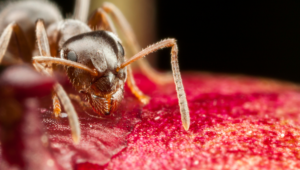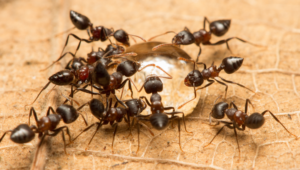Odorous House Ants
Your Ant Problem, Gone For Good, Guaranteed.
Talk to an Expert
We’ll be in touch to personalize your pest protection plan:

DESCRIPTION:
___
Odorous house ant workers are brown to black and 1/16 to 1/8-inch long. The best identifying characteristic is the rancid butter smell these ants produce when they are crushed, hence their name. When alarmed, the workers scurry around with their abdomens raised in the air.
BIOLOGY:
___
These ants swarm to mate from early May through mid-July, and also mate in the nest, forming new colonies by budding off the original colony. A colony has approximately 10,000 workers and several queens, each laying one egg a day. Developmental time (egg to adult) is 34-83 days; however, during the winter, it may take six to seven months. Workers and queens live for several years.

HABITS:
___
Odorous House Ants often nest outdoors under stones, logs, and in the nests of larger ants. They can also nest indoors in wall or floor voids, and around heat sources. These ants travel in trails and prefer sweets, although they eat almost any household food. They usually invade structures during rainy periods after honeydew on plants has washed off.







